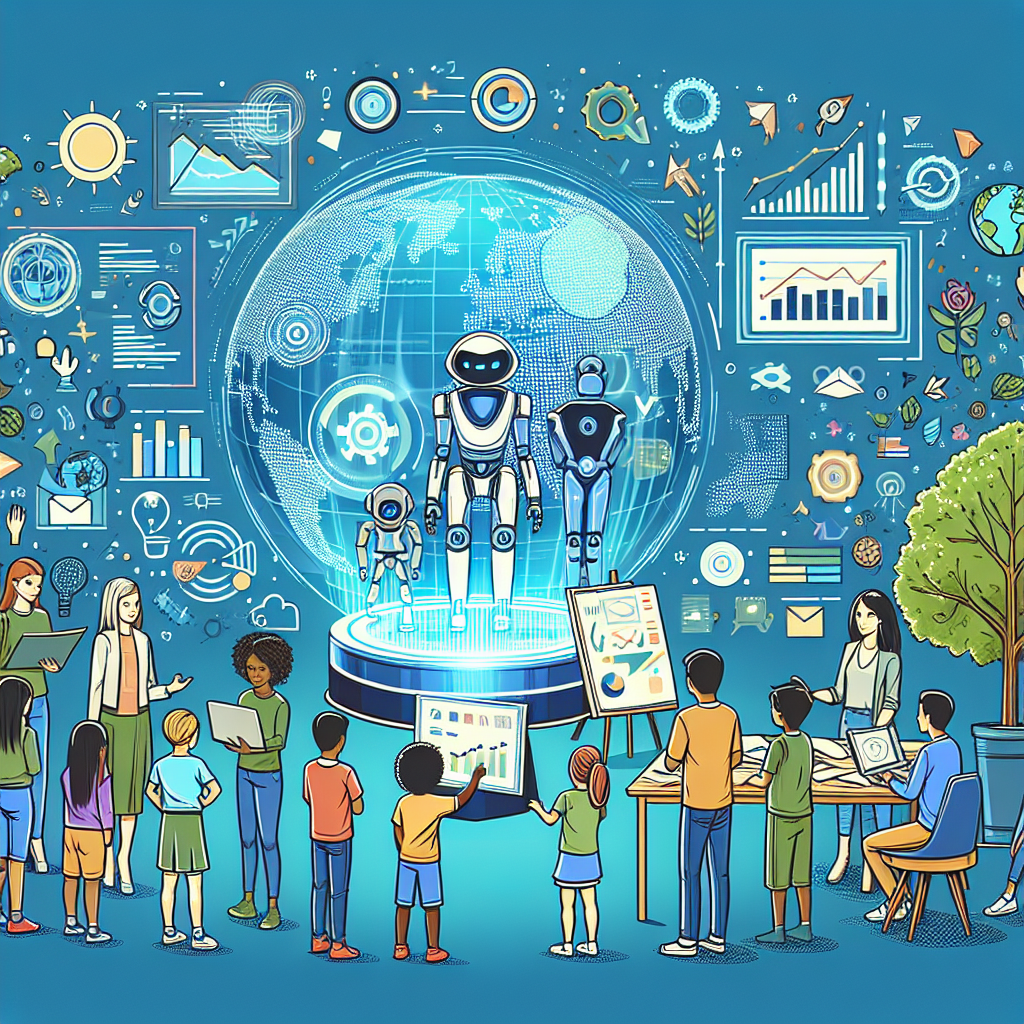Artificial intelligence (AI) is transforming the way nonprofits engage with youth and children in a variety of ways. From personalized learning experiences to more efficient communication and fundraising efforts, AI is revolutionizing the nonprofit sector and helping organizations better connect with their younger audiences. In this article, we will explore the ways in which AI is being used by nonprofits to engage with youth and children, as well as some frequently asked questions about the role of AI in the nonprofit sector.
One of the key ways in which AI is transforming the way nonprofits engage with youth and children is through personalized learning experiences. AI-powered platforms and tools can analyze data on individual students’ learning styles, preferences, and progress, and tailor educational content and activities to meet their specific needs. This personalized approach to learning can help nonprofits better engage with young people and ensure that they are receiving the support and resources they need to succeed.
For example, organizations like Khan Academy and Coursera use AI algorithms to recommend educational content to students based on their interests and learning goals. This not only helps students stay engaged and motivated, but also ensures that they are receiving the most relevant and useful resources for their unique needs.
AI is also helping nonprofits engage with youth and children through more efficient communication and fundraising efforts. Chatbots and virtual assistants powered by AI can provide instant responses to inquiries, offer personalized recommendations, and even assist with donation processing. This can help nonprofits streamline their communication processes and provide a more responsive and engaging experience for their young supporters.
Additionally, AI can be used to analyze data on donor behavior and preferences, helping nonprofits better target their fundraising efforts and maximize their impact. By leveraging AI-powered tools, nonprofits can identify trends and patterns in donor behavior, predict future giving patterns, and tailor their fundraising strategies to better engage with young donors.
Furthermore, AI is also being used by nonprofits to create more engaging and interactive experiences for youth and children. Virtual reality (VR) and augmented reality (AR) technologies powered by AI can provide immersive and interactive learning experiences, allowing young people to explore new worlds, learn new skills, and engage with educational content in a more dynamic and engaging way.
For example, organizations like UNICEF have used VR and AI technologies to create virtual reality experiences that allow young people to see the world through the eyes of a child living in a refugee camp. This immersive experience can help foster empathy and understanding among young people, and inspire them to take action to support children in need around the world.
In addition to personalized learning experiences, efficient communication and fundraising efforts, and engaging interactive experiences, AI is also helping nonprofits better track and measure their impact on youth and children. AI-powered analytics tools can collect and analyze data on program outcomes, participant engagement, and other key metrics, helping organizations assess the effectiveness of their programs and make data-driven decisions to improve their impact.
Overall, AI is transforming the way nonprofits engage with youth and children by providing more personalized, efficient, and engaging experiences for their young audiences. By leveraging AI technologies, nonprofits can better connect with young people, provide them with the support and resources they need to succeed, and maximize their impact on the communities they serve.
Frequently Asked Questions about AI in the Nonprofit Sector:
Q: How can AI help nonprofits better engage with youth and children?
A: AI can help nonprofits better engage with youth and children by providing personalized learning experiences, efficient communication and fundraising efforts, engaging interactive experiences, and improved tracking and measurement of impact.
Q: What are some examples of nonprofits using AI to engage with youth and children?
A: Organizations like Khan Academy, Coursera, UNICEF, and many others are using AI to provide personalized learning experiences, interactive educational content, and more efficient communication and fundraising efforts for youth and children.
Q: How can nonprofits ensure that AI technologies are used ethically and responsibly in their engagement with youth and children?
A: Nonprofits should prioritize transparency, accountability, and data privacy when using AI technologies to engage with youth and children. Organizations should also seek input from young people and children themselves to ensure that AI is being used in a way that is respectful of their needs and preferences.
Q: What are some potential challenges and limitations of using AI in the nonprofit sector to engage with youth and children?
A: Some potential challenges and limitations of using AI in the nonprofit sector include concerns about data privacy, ethical considerations, and the potential for bias in AI algorithms. Nonprofits should be mindful of these challenges and work to address them proactively in their use of AI technologies.
In conclusion, AI is transforming the way nonprofits engage with youth and children by providing more personalized, efficient, and engaging experiences for their young audiences. By leveraging AI technologies, nonprofits can better connect with young people, provide them with the support and resources they need to succeed, and maximize their impact on the communities they serve. With the continued advancement of AI technologies and the ongoing commitment of nonprofits to ethical and responsible use of these tools, the future of youth engagement in the nonprofit sector looks brighter than ever.

